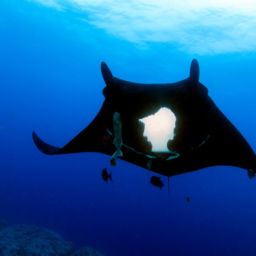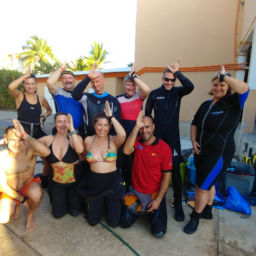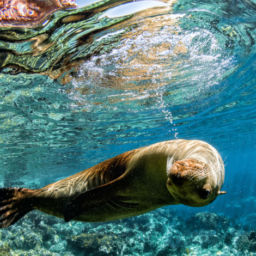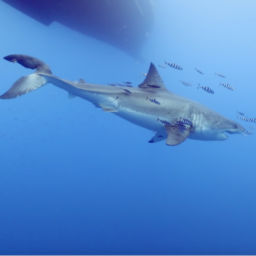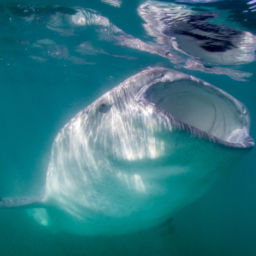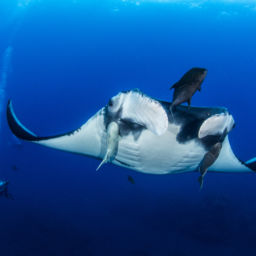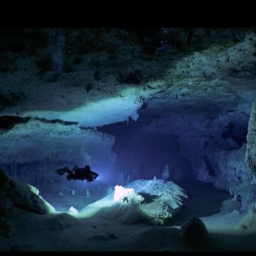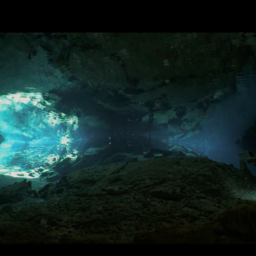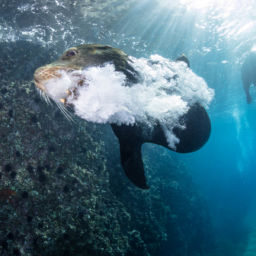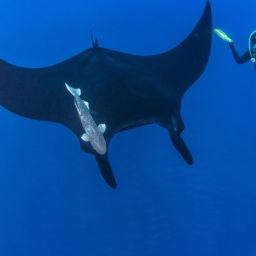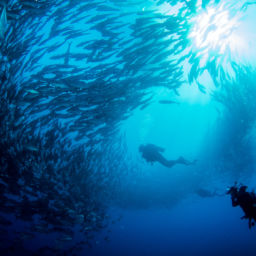In the third of our 3-part series on the best scuba diving in Mexico, we’re covering Guadalupe Island and the Yucatan. (See the first installment here and the second installment here.) Read on for unmissable experiences with great white sharks, bull sharks, whale sharks and more.
Guadalupe Island
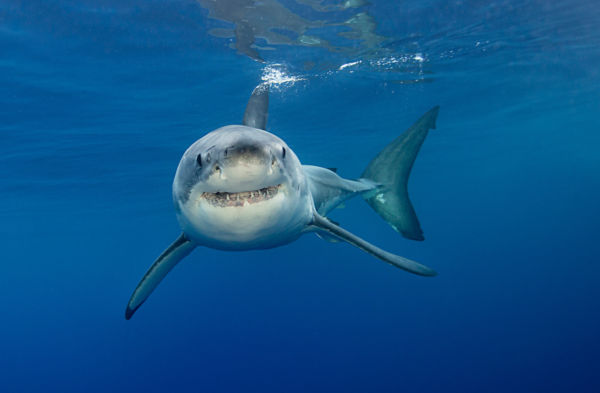
Guadalupe is all about cage diving with great white sharks, and this epic Mexican dive experience is high on many divers’ wish lists.
A small and remote volcanic island, Guadalupe lies around 150 miles (241 km) west of Baja California in the Pacific Ocean. It is a biosphere reserve and is only accessible by Guadalupe liveaboard diving. Although boats do use bait to draw in the sharks, there is minimal chumming and so divers will get to see a bit of the sharks’ natural behaviors and environment, as the great whites would be in the area with or without the chum. Guadalupe is especially popular as a cage-diving destination thanks to the relatively warm water and great visibility. Water temperatures during shark season average from 66 to 72 F (19 to 22 C), and visibility ranges from 138 to 164 feet (42 to 50 m). Although water temperatures aren’t particularly cold, keep in mind that you will not be moving around while underwater and will get chilled relatively quickly. You’ll want at least a 5 mm full wetsuit and may want to consider additional layers such as a vest, hood, and gloves.
Who is the diving suitable for?
You don’t need to have any dive experience to join a shark cage diving safari at Guadalupe. There are surface cages for those who do not possess any certification at all, and cages at depth are placed around 20 feet (6 m), so you need only have your open water certification to dive.
When is the best time to visit?
When you want to visit depends on which of the over 200 known sharks you’d like to spend time with. Energetic male sharks visit during July and August and huge females arrive in October and November. Visit in mid-September for the best of both worlds.
How TO get to Guadalupe Island
Most liveaboard trips depart from San Diego via bus, on which you’ll cross over the Mexican border. From there you’ll meet your boat in Ensenada for the overnight cruise to Guadalupe. San Diego’s international airport is the Lindbergh Field Airport.
Yucatan Peninsula
On the other side of Mexico in the Caribbean, the Yucatan Peninsula is a diverse dive destination, offering everything from snorkeling with whale sharks off Isla Mujeres, to dives with bull sharks in Playa del Carmen, crystal-clear cenote diving, and vibrant reefs in Cozumel.
Who is the diving suitable for?
There are a variety of dives for all experience levels and marine life preferences. Diving is available year-round.
When is the best time to visit?
Divers who visit from May to November can expect uncrowded Cozumel dive sites and you’ll commonly find bull sharks off Playa del Carmen from November to March. Those who want to see whale sharks should plan a summertime visit from June to September, though keep in mind that it’s a snorkel-only experience. Water temperatures average 77 to 82 F (25 to 28 C).
How to get to the Yucatan Peninsula
Among the airports in the Yucatan region, there is one at Cancun and also at Cozumel. You’ll typically access Islas Mujeres via ferry from Puerto Juarez, north of Cancun. Playa del Carmen’s closest airport is Cancun. You can fly directly into Cozumel, though you can also reach it by ferry from Playa del Carmen.
Islas Mujeres
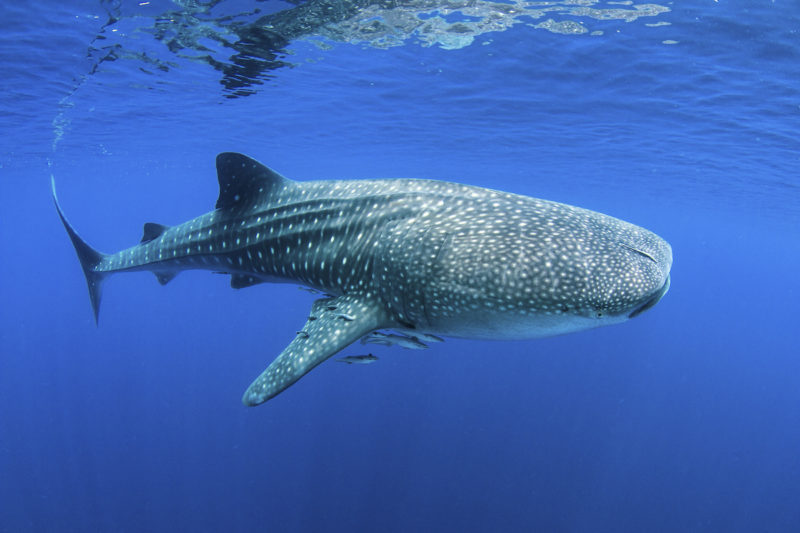
Isla Mujeres off the coast of Cancun is home to one of the most reliable whale shark aggregations in the world. Hundreds of whale sharks gather here from June to September each year, and you can go snorkeling with them.
While visiting Isla Mujeres, explore the colorful coral reefs and shipwrecks in the area. If possible, visit Shark Cave, an isolated dive site that regularly hosts blacktips, gray reef and nurse sharks.
Playa del Carmen
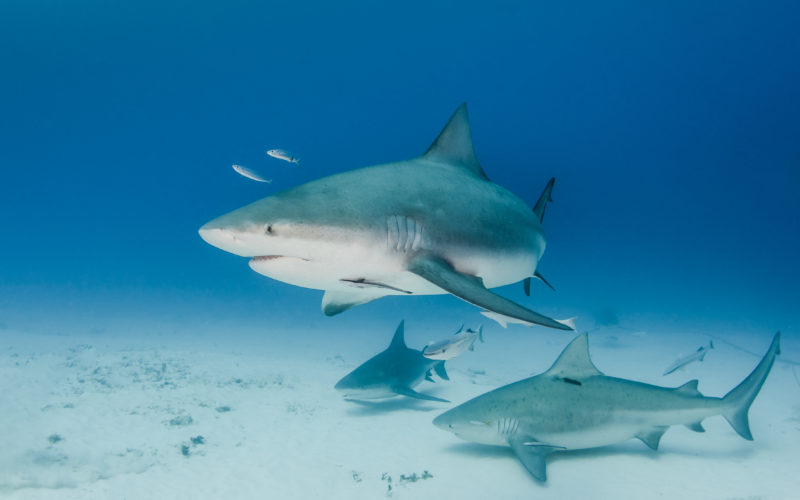
Playa del Carmen is renowned for bull shark diving. From November to March, this area hosts large female bull sharks that arrive to breed, and you can go diving with them.
Once you’ve had your fill of bull shark encounters, check out the reefs in the area. The waters are clear, and the reefs are teeming with life. You can dive from a boat or shore, depending on your preference.
A trip to dive the glassy Mexican cenotes is also well worth it if you’re visiting Playa del Carmen. These natural sinkholes are well-known in the Yucatan dive scene and offer unique diving.
Cozumel
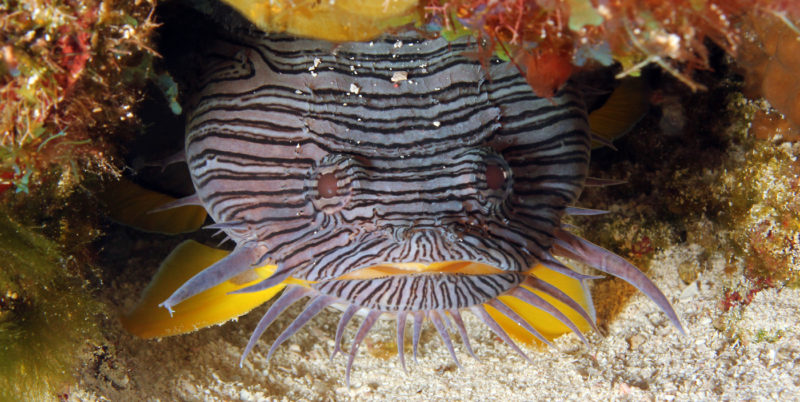
If you’re looking for more adventurous year-round diving, Cozumel is a great choice. This beautiful island offers some of the fastest drift dives in the world and is famous for its wall dives.
The reef around Cozumel is part of the Mesoamerican reef system and is protected by the Cozumel Reefs National Park, which means it’s exceptionally healthy. It’s home to hundreds of fish species, including the endemic splendid toadfish.
As well as deep wall dives for advanced divers, there are easier dives for new divers to enjoy. All in all, this is a great destination for sunshine, diving and strolling along white-sand beaches.
This article was written by divers and writers at LiveAboard.com



